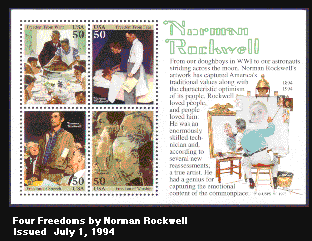| Mass Communication Media on Stamps Magazines |
|
|---|---|

The word magazine comes from the Arab word "Makhasin" which means storehouse, usually referring to military stores. Published periodicals came to be called magazines because they were a storehouse of information. The first was The Review published in London in 1704 by Daniel Defoe (who also wrote Robinson Crusoe). The first periodical to actually be called a magazine was Gentlemen's Magazine published in London in 1731. Magazines were slow to develop in America. Ben Franklin tried starting one but it only lasted for six issues. Magazines didn't get a good start in America until the mid-19th century. In 1825 there were fewer than 100. By 1850 there were 685; by 1870 1,200. By the beginning of the 20th century, magazines were well established. Like most America media, magazines today are businesses operated for a profit, making money through revenues from circulation and advertising. The 20th century brought the birth of the newsmagazine when Time was founded by Henry Luce and Briton Hadden in 1923. There were many large-circulation general magazines in the first half of 20th century: Collier's, Cosmopolitan, Saturday Evening Post, Life, Look. The artist Norman Rockwell was famous for his Saturday Evening Post cover paintings. In the 1940s and 1950s competition from television shrank the number of subscribers to general-interest magazines and stole the advertisers. Magazines had to adjust. The general interest magazines were largely replaced by more narrowly focused special-interest magazines which reach a highly-targeted specific audience. |
|
American Philatelic Society member SpaceToday.org.

| Navigating this Virtual Stamp Album | |
|---|---|
| | TOP OF THIS PAGE | | PRINTING | BOOKS | NEWSPAPERS | PAMPHLETS | MAGAZINES | | TELEGRAPH | WIRELESS | RADIO | TELEVISION | | MOVIES | RECORDINGS | THE WORLD WIDE WEB | | STAMP ALBUM FRONT PAGE | |  To the Webmaster's page |